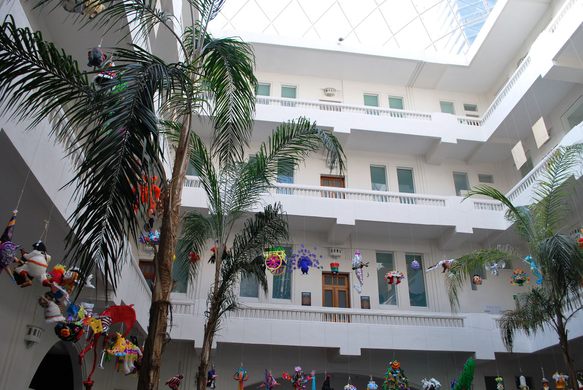"Mexico is a vastly multilingual and multiethnic country, where thousands of different indigenous folk traditions meld with Spanish colonial influences and modernism to create a distinctive culture that can be extremely difficult to categorize. As such it has one of the richest traditions of folk art (or as it is sometimes literally translated from Spanish, “popular art”) in the world. The Museo de Arte Popular embraces these uniquely Mexican crafts, displaying some of the weirdest and most wonderful religious articles, dioramas, monsters, skeletons, piñatas, and pottery you are likely to see anywhere. Octavio Paz famously wrote about the legendary treatment of death in Mexican culture: “The Mexican chases after death, mocks it, courts it, hugs it, and sleeps with it. He thinks of it as his favorite plaything and his most lasting love.” Whether or not this is broadly true, the Museo de Arte Popular demonstrates the cultural importance of death in the country, and especially the Día de Muertos, through folk art traditions around the country. Skulls and skeleton figures of all sizes, shapes, and materials abound in the collection, and the museum hosts special celebrations on the Day of the Dead. The brightly lit main atrium of the museum also features a wall decorated by a jumble of alebrijes, gigantic and fantastical animal figures like flies with dragon tails and multi-headed lions, all painted with neon colors. Once a year, the museum puts on a carnival-like parade of these sculptures. Alebrijes were created by Mexico City artisan Pedro Linares. They are also very popular in the southern state of Oaxaca, whose artisans still make some of the largest and most outlandish sculptures for the parade. If you are walking down Mexico City’s monumental Paseo de la Reforma in October and encounter a parade of psychedelic papier-mâché creatures marching towards you, just know the Museo de Arte Popular is responsible." - ATLAS_OBSCURA




